
 |
Eager Space | Videos by Alpha | Videos by Date | All Video Text | Support | Community | About |
|---|

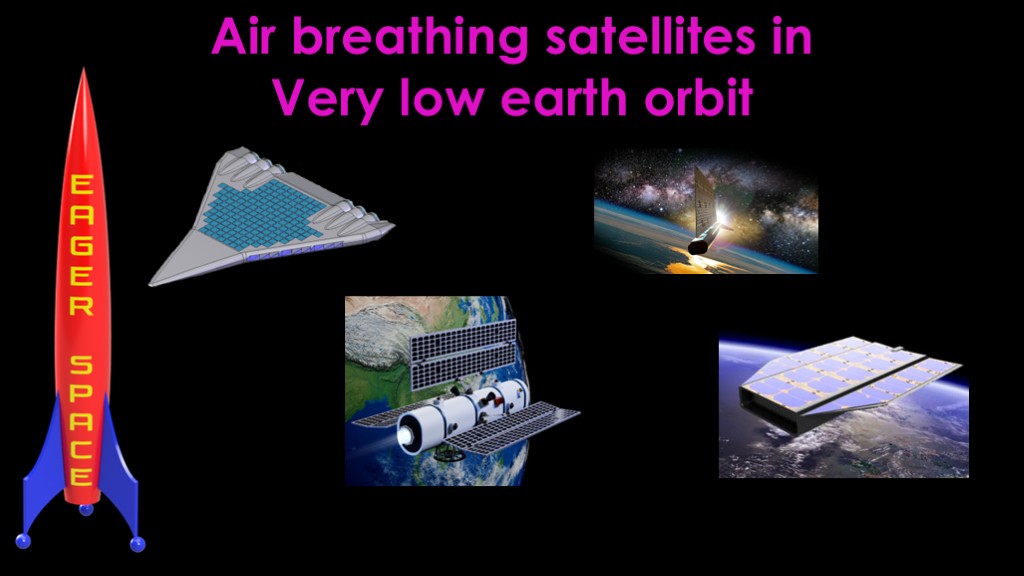
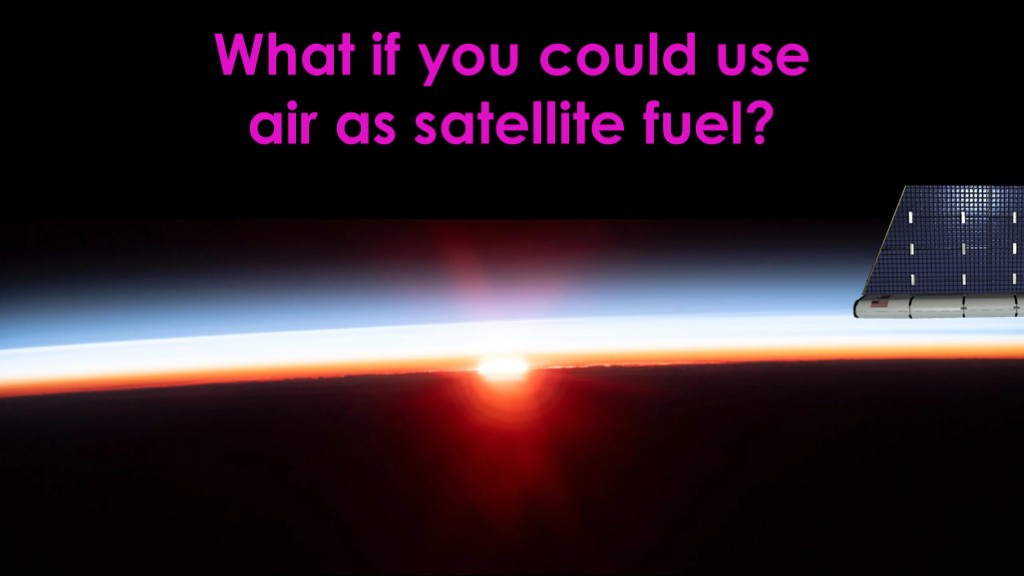
What if you could use air as satellite fuel?
There are many crazy ideas in aerospace, and this sounds like one of them.
It turns out, however, that this concept might actually be practical.
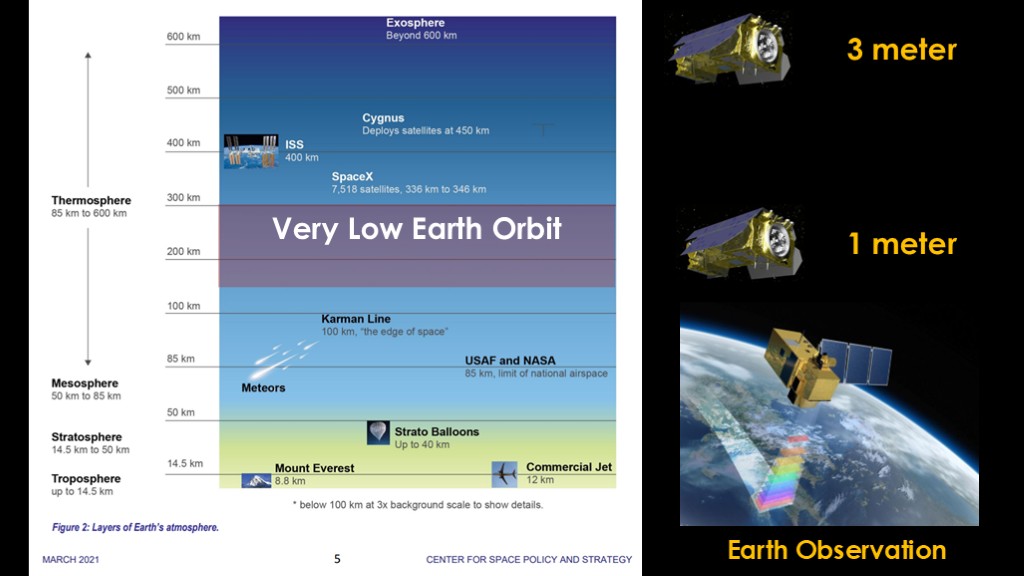
First, we need to understand what these lower altitudes can do for us. Why would we want to put a satellite into very low earth orbit, from 300 kilometers all the way down to about 150 kilometers.
The first use is for earth observation. Let's say that we have a satellite doing optical imaging at 600 kilometers and the cameras are good enough to provide 3 meter resolution - the smallest objects it see are 3 meters in size. Drop that satellite down to 200 kilometers, and it now has 1 meter resolution. Much cheaper than a camera big enough to give us 1 meter resolution at 600 kilometers.
There is a downside to this; the size of the area we image at 200 kilometers is one ninth of the size at 600 kilometers, so it may take us longer to gather images. It might not replace our satellites at 600 kilometers but extra resolution at 200 kilometers would be a great addition.
This improvement holds true for other earth observation - if you are using ground-penetrating radar, for example.
Closer is always better for observational resolution
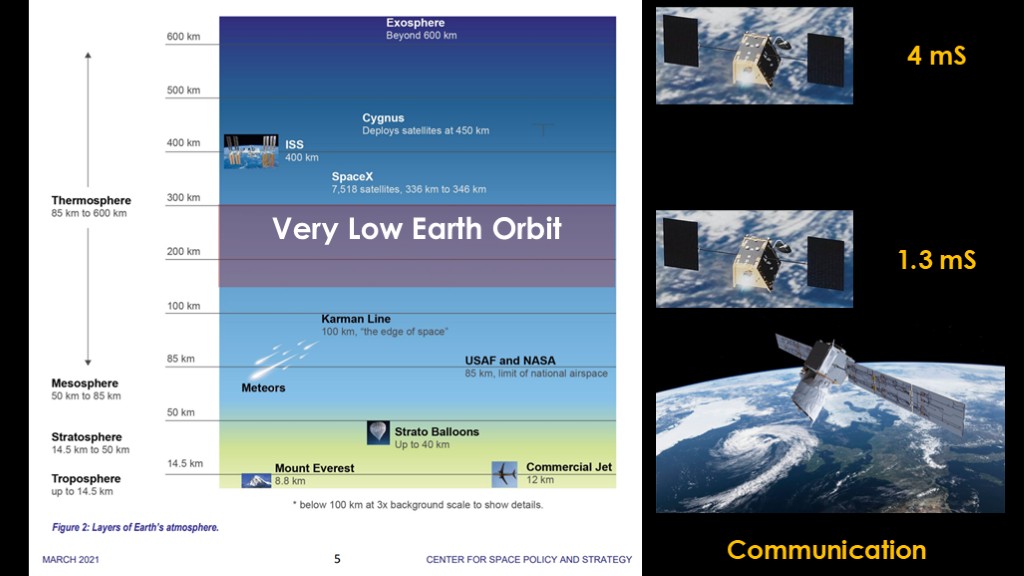
The second use is for communications satellites. Your satellite at 600 kilometers has a round trip time of 4 milliseconds, compared to only 1.3 milliseconds at 200 kilometers. That's one of the reasons that starlink is so low - being closer is always faster.
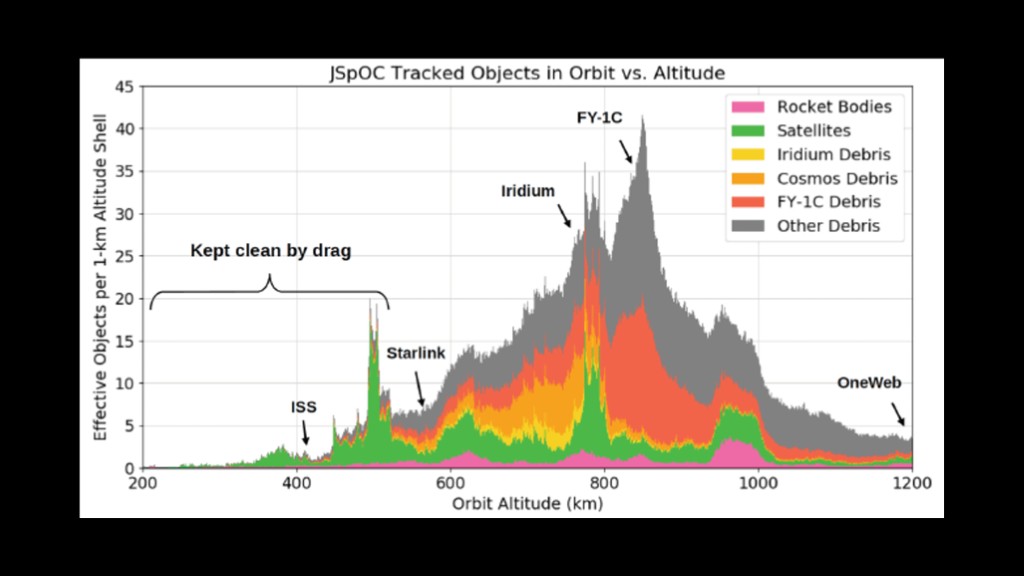
A third benefit is that there is pretty much zero orbital debris in very low earth orbit, so you don't have to worry about debris avoidance.
Or, to put it another way, anything at those altitudes is very close to burning up.
There seem to be benefits to very low earth orbit satellites. How would an air powered satellite work?
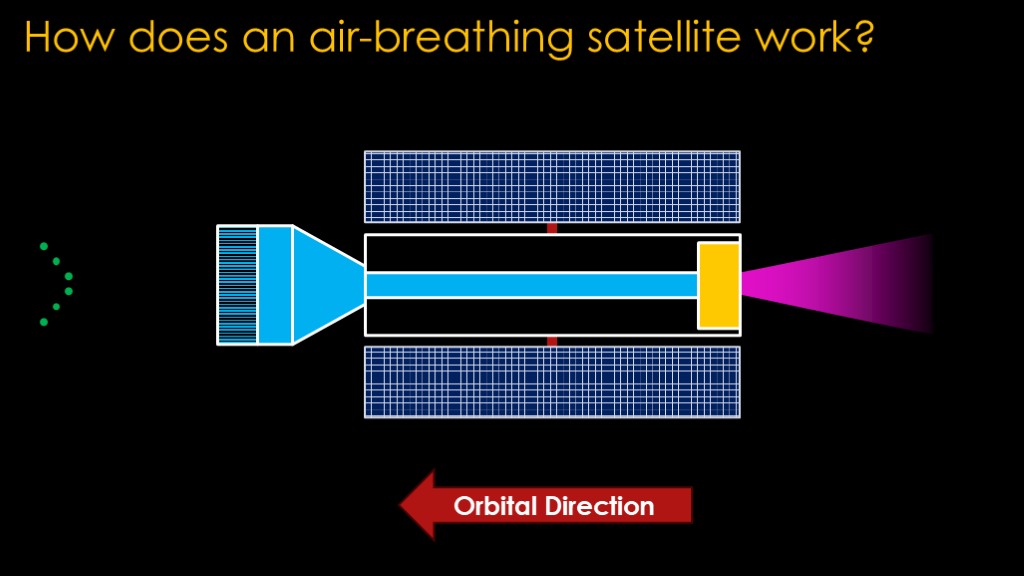
The basic concept is fairly simple.
You build a spacecraft body and attach some light but powerful solar arrays.
At the front you attach an air catcher. When the spacecraft is in orbit, the air molecules will be caught by the air catcher, enter the inside of the spacecraft, and be shuffled into an ion thruster, where they will be accelerated and exit the thruster, pushing the spacecraft forward.
Simple.
Except isn't space a vacuum?
Where would there be enough air for that to possibly work?
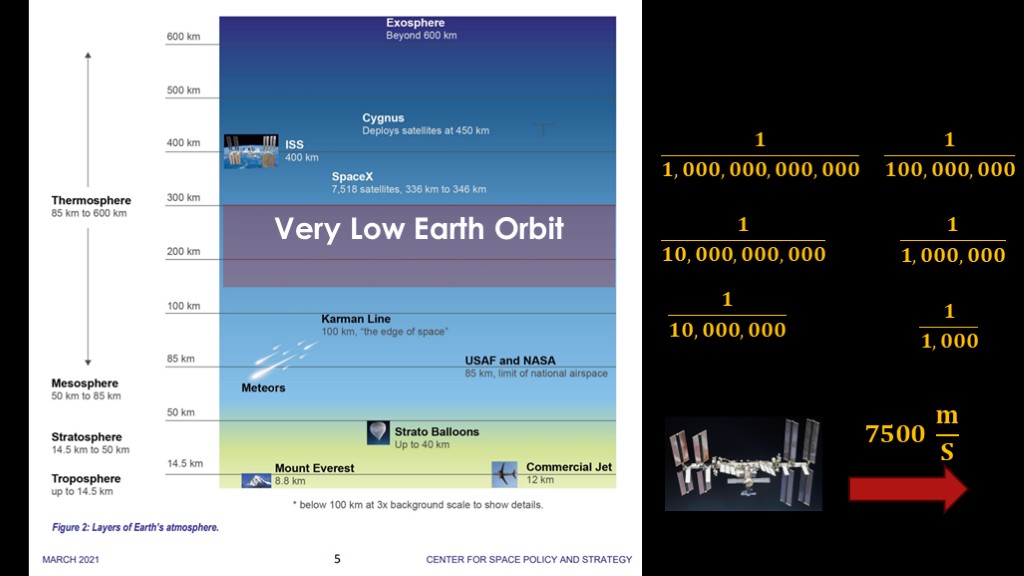
The international space station orbits at around 400 kilometers, and we know that the number of air particles at that altitude is roughly one one trillionth of sea level.
As we get closer, there are more air particles - 200 kilometers, it's one ten billionth, and at 100 kilometers, it's one ten millionth.
Those are pretty small numbers, but our satellite isn't standing still, we are moving at about 7500 meters per second and our air scoop therefore sweeps a much larger volume of space, roughly 10,000 times more.
The actual density in terms of how much space we scoop is one one hundred millionth at 400 kilometers, one one millionth at 200 kilometers, and only one one thousandth at 100 kilometers.
That's more air than I expected.
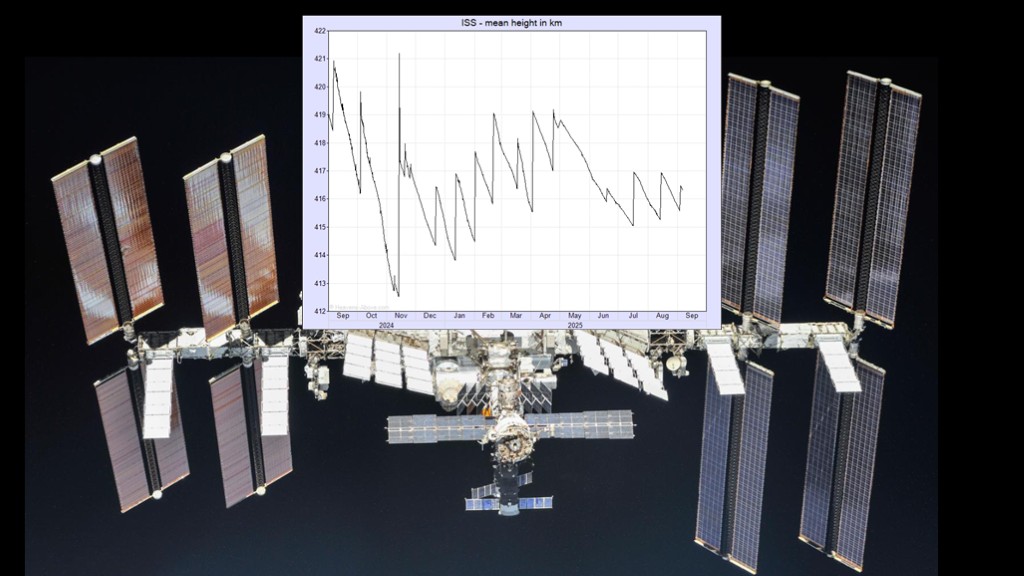
This is why the ISS - despite being at 400 kilometers where there is very little atmosphere - generates enough drag to require it to be reboosted more than 10 times in an average year. Without reboost, it would drop into denser atmosphere and quickly deorbit in less than a year.
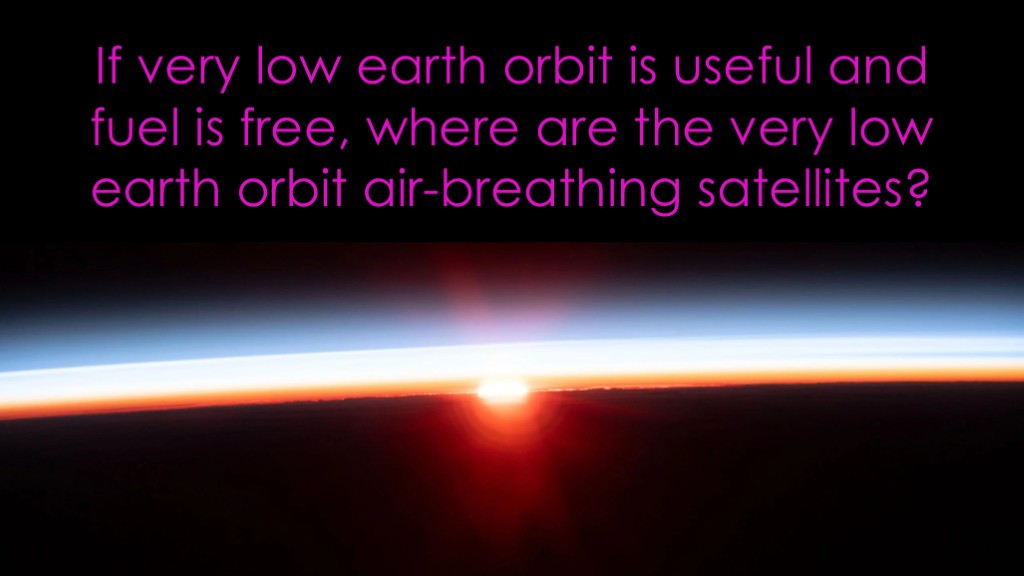
Which brings up an obvious question - if very low earth orbit is useful and the fuel is free, where are the very low earth orbit air-breathing satellites?
You'll probably not be surprised when I tell you there are a few problems...
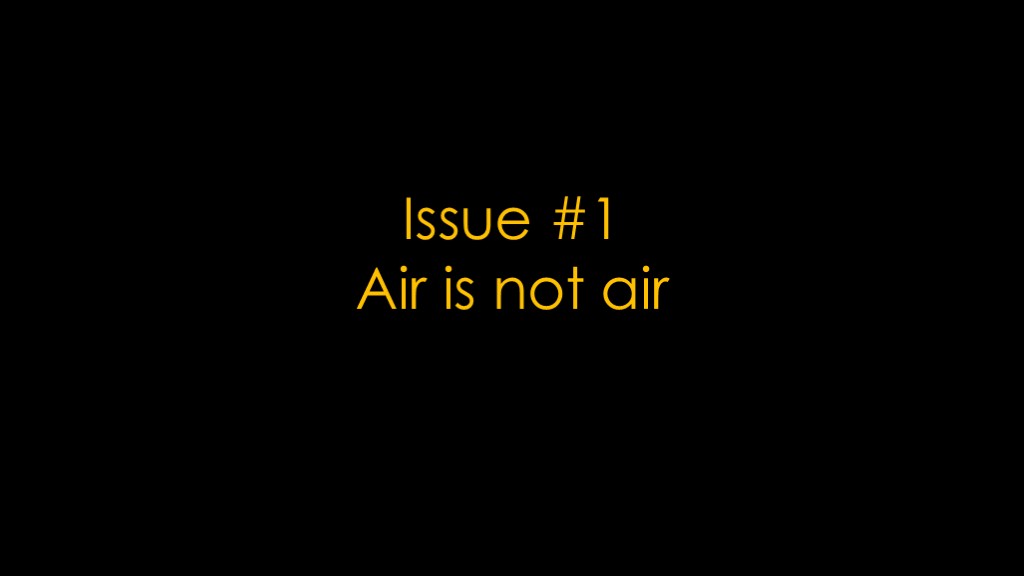
The first issue is that air is not air. At least it's not what I thought of as air.
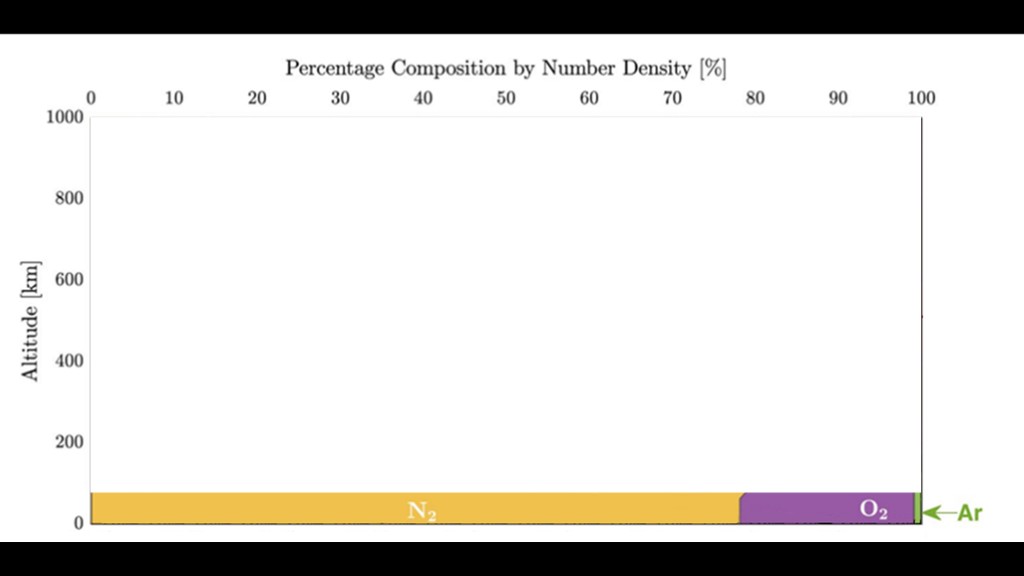
You probably know that down where we live, air is about 78% nitrogen, about 21% oxygen, a bit of argon and some other gases thrown in.
What I didn't know is that the composition of the atmosphere changes significantly as we go higher.
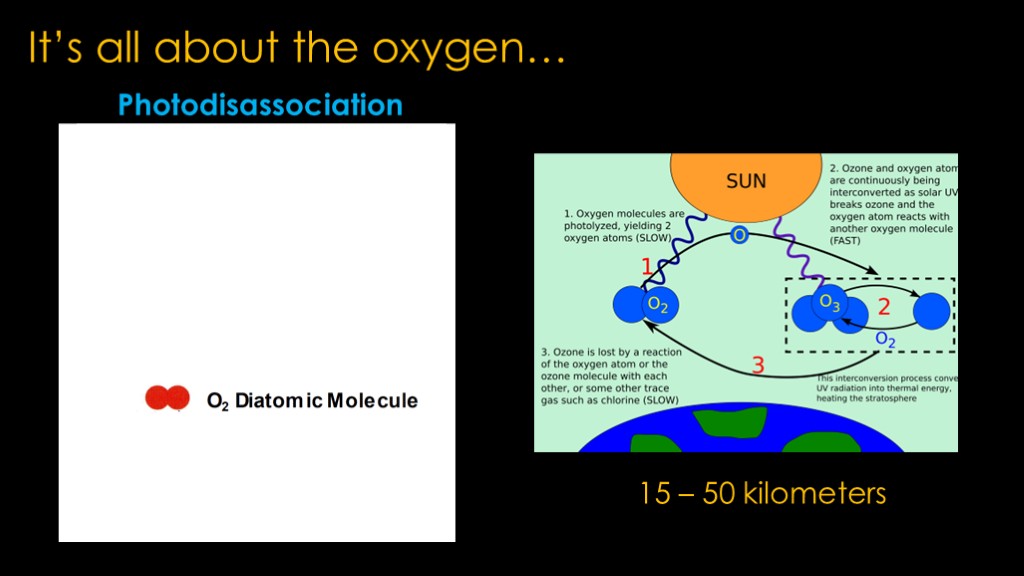
The oxygen at our level is what we call diatomic oxygen - a molecule composed of two oxygen atoms, also known as O2.
When a diatomic oxygen molecule is exposed to ultraviolet light with enough energy, it breaks apart into atomic oxygen. The process is known as photodisassociation.
This is coincidentally where the ozone layer comes from - the atomic oxygen combines with diatomic oxygen to produce ozone. Then UV radiation breaks the ozone apart and the process starts over again. It's this cycle that reduces the amount of UV light that makes it to the earth.
The ozone layer is pretty low, from 15 to about 50 kilometers of altitude.
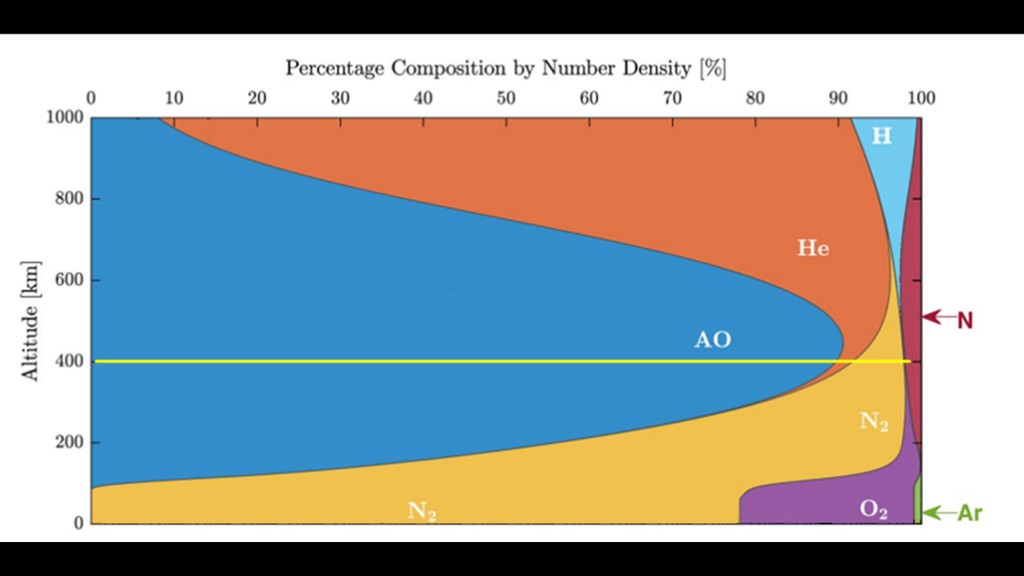
The atomic oxygen that is created by UV light is lighter in mass than diatomic oxygen or diatomic nitrogen, so it floats up higher.
Up at 400 kilometers, the atmosphere is about 90% atomic oxygen, with the rest being diatomic nitrogen, atomic nitrogen, and helium.
Atomic oxygen is really nasty stuff. Worse than diatomic fluorine, which is very high on the nastiness scale.
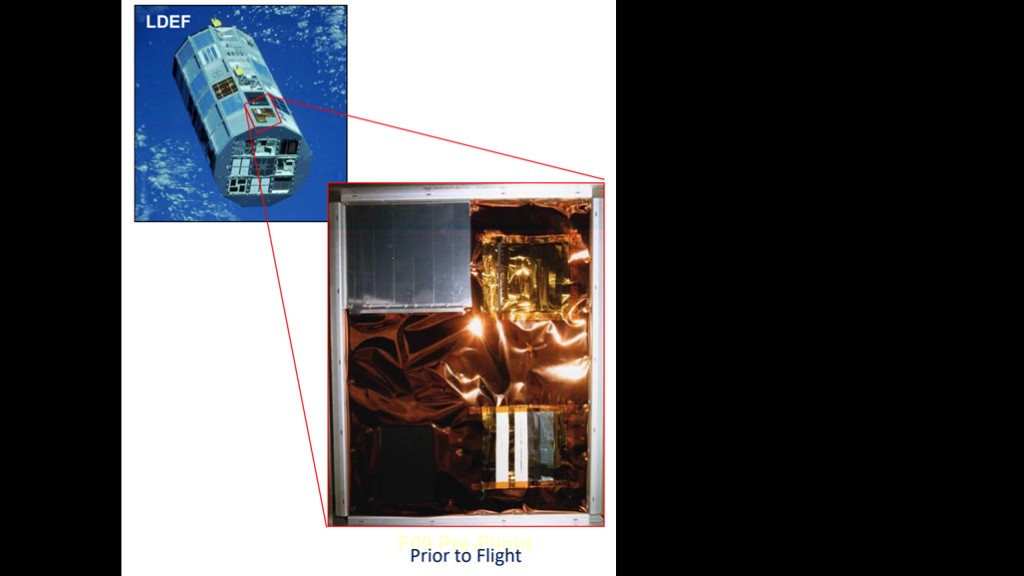
What this means is that at low earth orbits, we are much more concerned with the effect of diatomic oxygen on materials than the effect of vacuum.
The space shuttled launched the long duration exposure facility - or LDEF - on a 1 year mission in April of 1984, deploying it at 475 kilometers. That turned into a much longer mission because of the loss of challenger later that year, and LDEF spent nearly six years in orbit
NASA got to see the effects of atomic oxygen on many materials and we can see the significant damage during that time period.
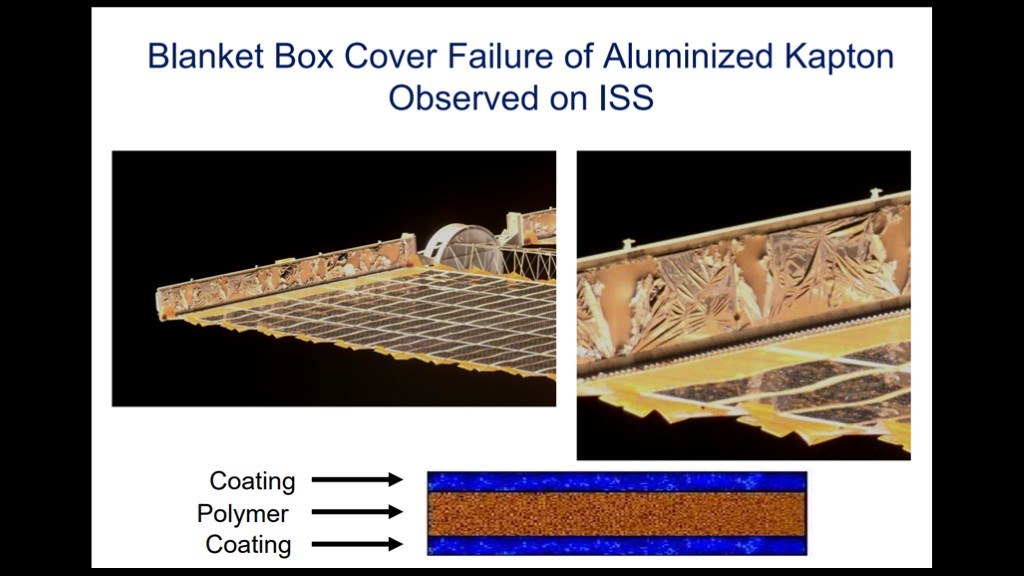
The problem also shows up on the international space station. Despite a protective coating, the Kapton film covering this assembly on the solar panels is totally deteriorated due to the atomic oxygen.
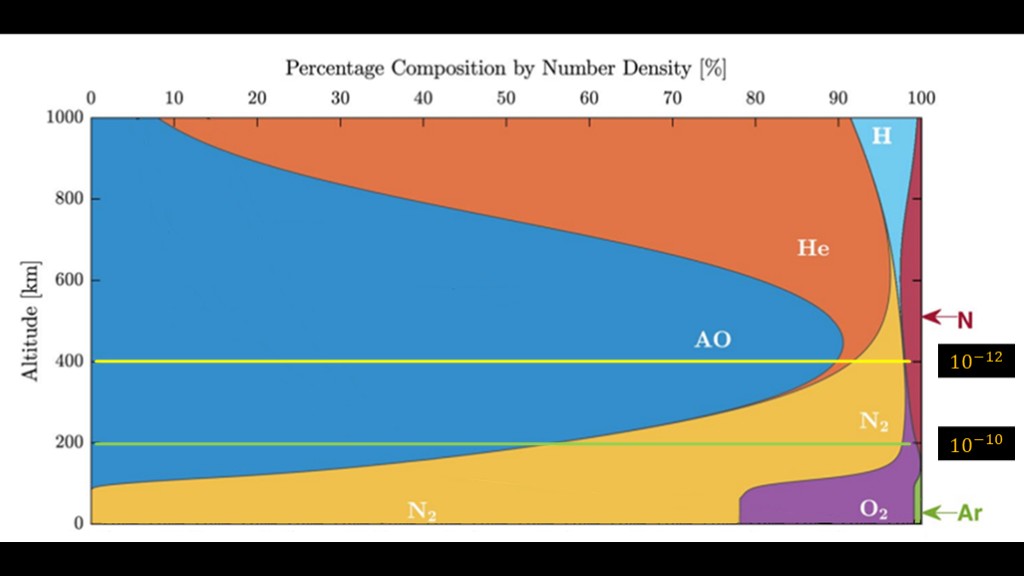
The composition at very low earth orbit - 200 kilometers or so - isn't quite as bad. Perhaps only 55% atomic oxygen rather than 90%.
But we need to remember that the particle density at 200 kilometers is 2 orders of magnitude, or 100 times higher than at the 400 kilometer altitude that ISS lives.
That means ... doing some quick math - the number of atomic oxygen molecules that our very low earth orbit spacecraft meets is 60 times what the ISS encounters.

To summarize, atomic oxygen is a purple monster who likes to eat things.
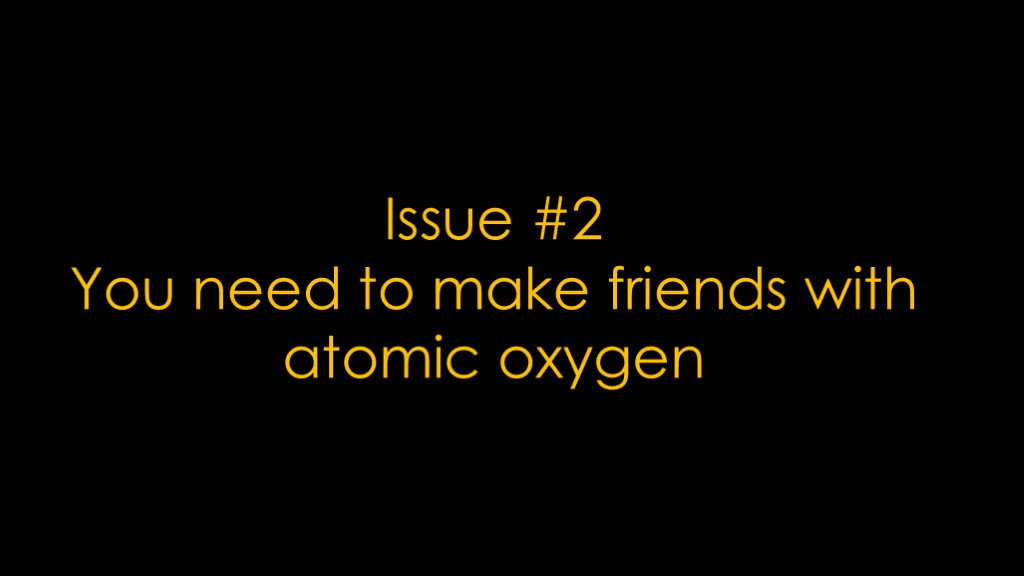
Issue #2 is that you need to make friends with atomic oxygen, because you're going to try to use it as fuel.
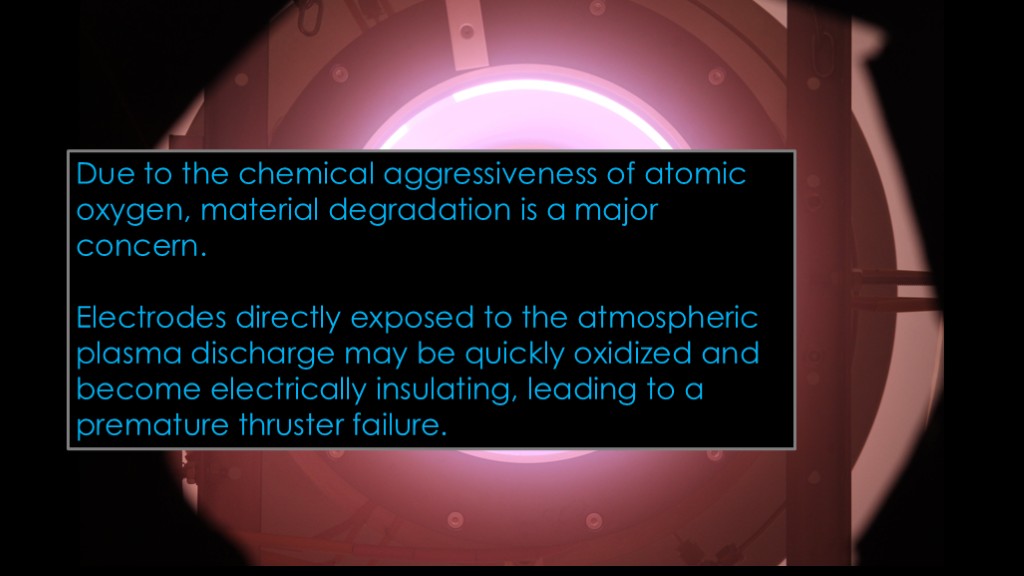
Here's a cheery quote:
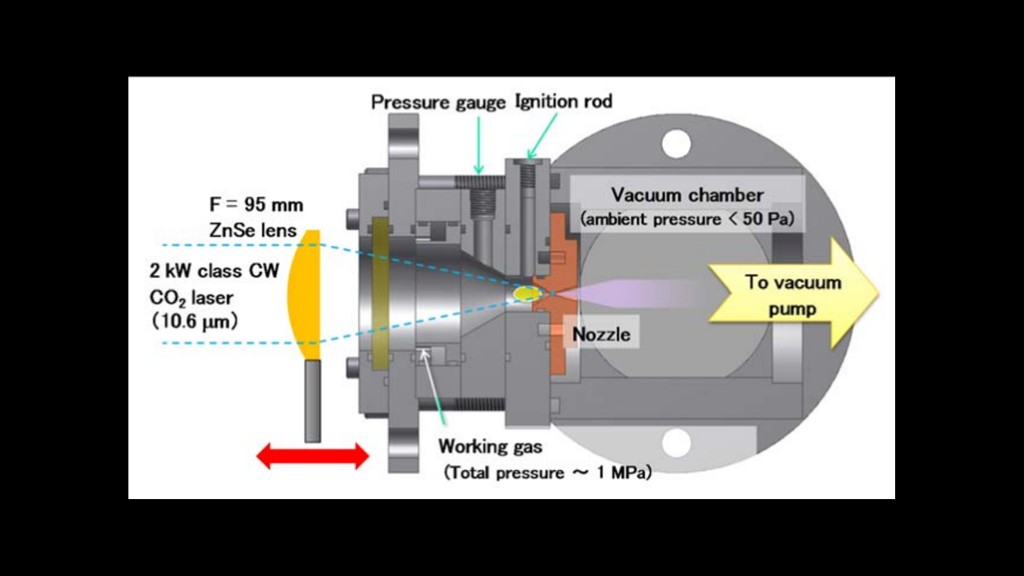
It's even difficult to produce a useful atomic oxygen stream to be used in testing of thrusters because it likes to eat everything
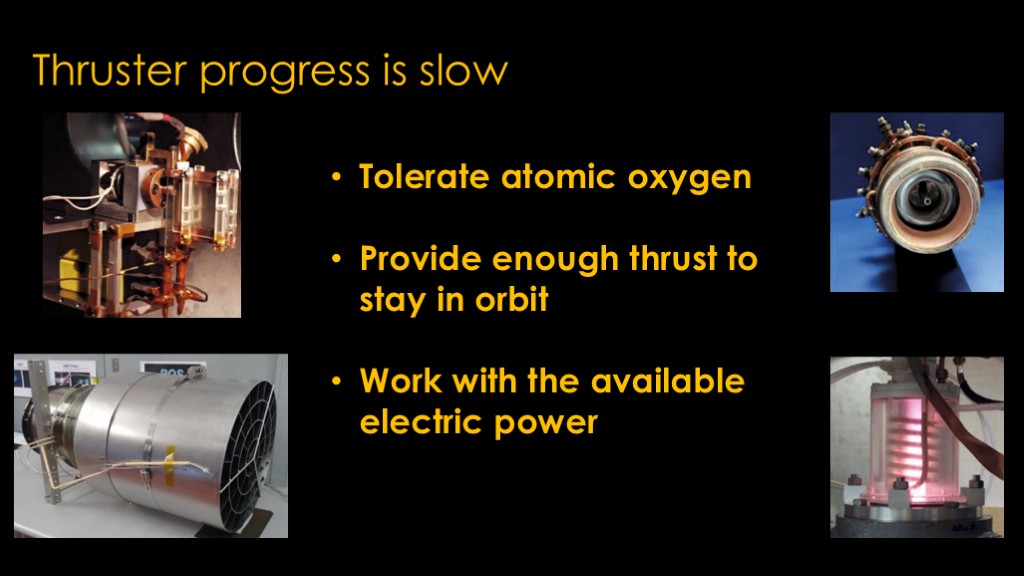
Your thruster needs to tolerate atomic oxygen, provide enough thrust to counteract the atmospheric drag and stay in orbit, and be efficient enough to work within the available electric power from your solar arrays.
This is a very challenging problem, and while there is a lot of research going on, progress is slow.

The third issue is that this isn't your mother's spacecraft - it's a brand new kind of vehicle.
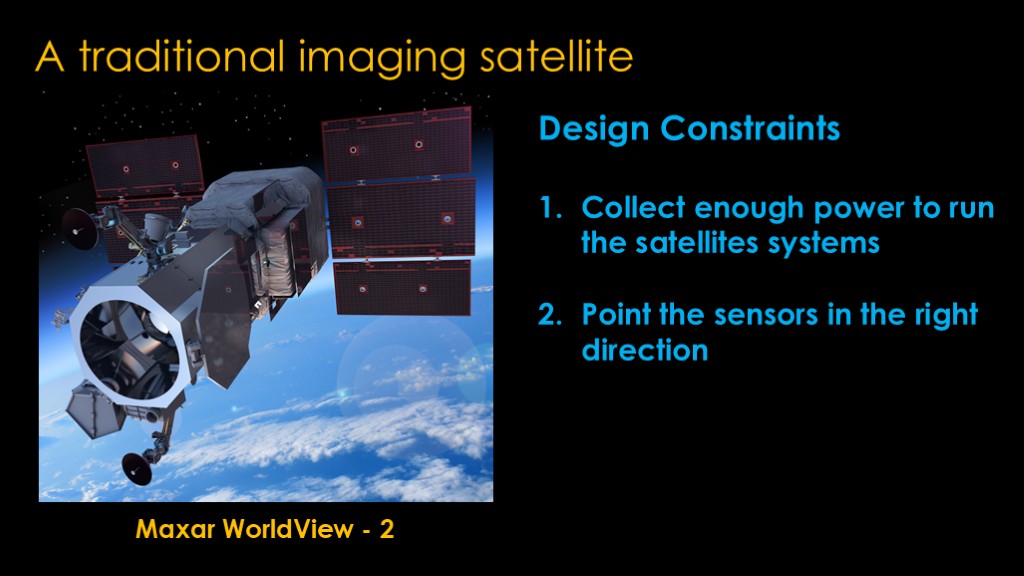
We'll start by looking at Maxar's WorldView-2 Satellite. It orbits at about 770 kilometers, so it's in a high orbit and therefore can have a long lifetime.
It has a pretty simple job. The spacecraft needs to align its solar panels to collect enough power so that it can keep functioning, and it has to point the sensors in the right direction. There's a tension between those two goals - if the satellite is pointed at a specific spot on the ground, the solar panels may not be pointed in a direction that produces the optimum amount of power. Both the design and the operations needs to keep those two constraints in mind.
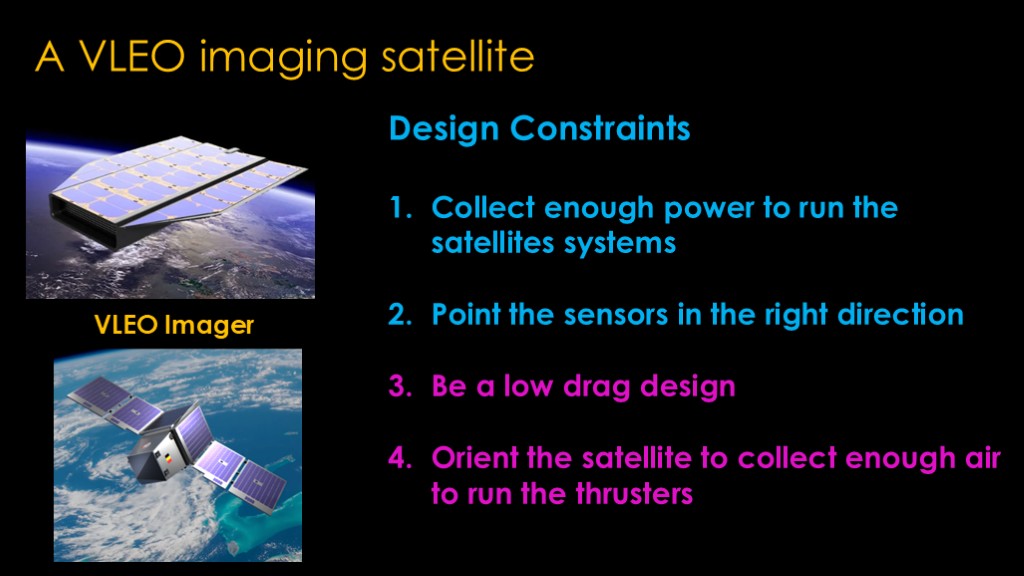
For the Very low earth orbit variant, we have those two constraints but we need to add two more. First, the overall design of the satellite has to be an aerodynamic, low drag design, and that means a spacecraft that looks very different than traditional spacecraft.
Second, we now have another operational constraint - we need to orient the satellite so that we are low drag and can collect enough air to run the thrusters.
We somehow need to find an operational balance that allows us to orient the sensors to image our target but stay in a low drag high air collection orientation and a high electrical power generation orientation.
If we oversize our solar panels to work at other orientations they will be bigger and generate more drag in all positions.
It is possible that there is no solution that works all the time - we may have to switch between a thrusting attitude that allows us to maintain orbit and an image collection attitude that prioritizing imaging over the other concerns. And if we get that mix wrong we drop out of orbit.
These are all new constraints for satellites.
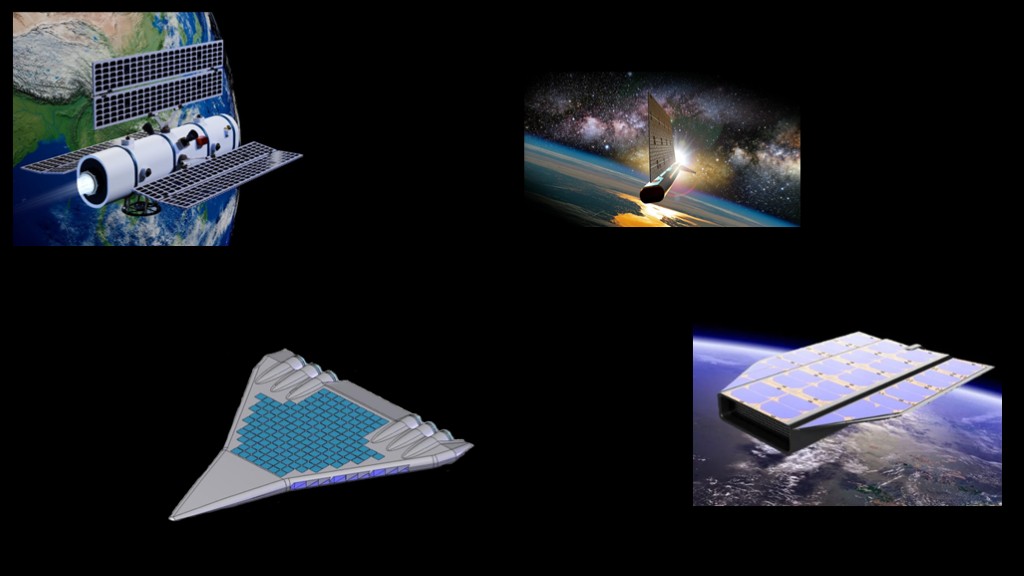
It is true, however, that the very low earth orbit designs look less like assemblies of random components and more like high performance aircraft, or at least what many science fiction spacecraft look like.
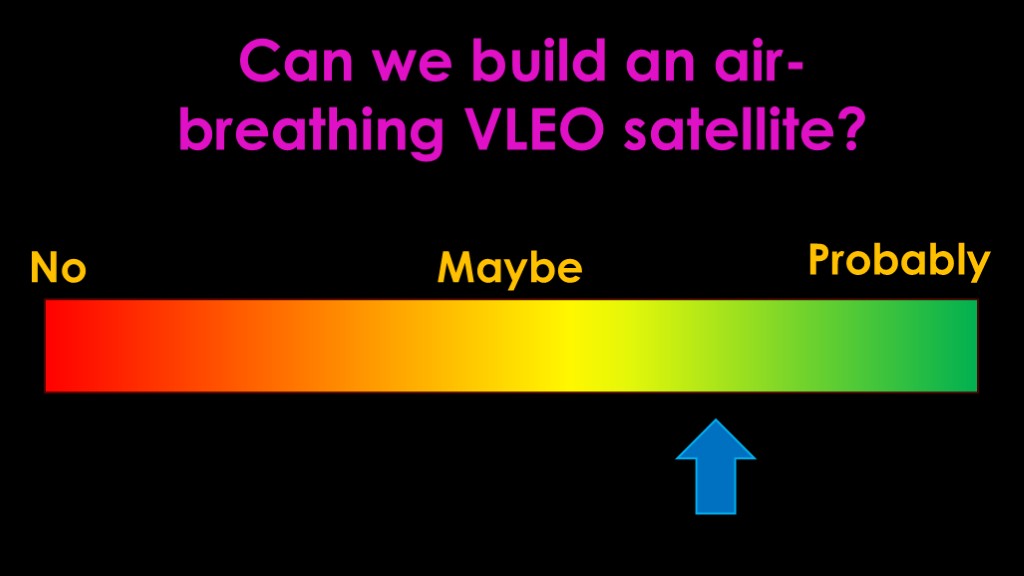
Can we build an air breathing very low earth orbit satellile.
I think the answer is somewhere between maybe and probably, but it's a challenging engineering and operational problem.
As often is the case, I think this is the wrong question to be asking.
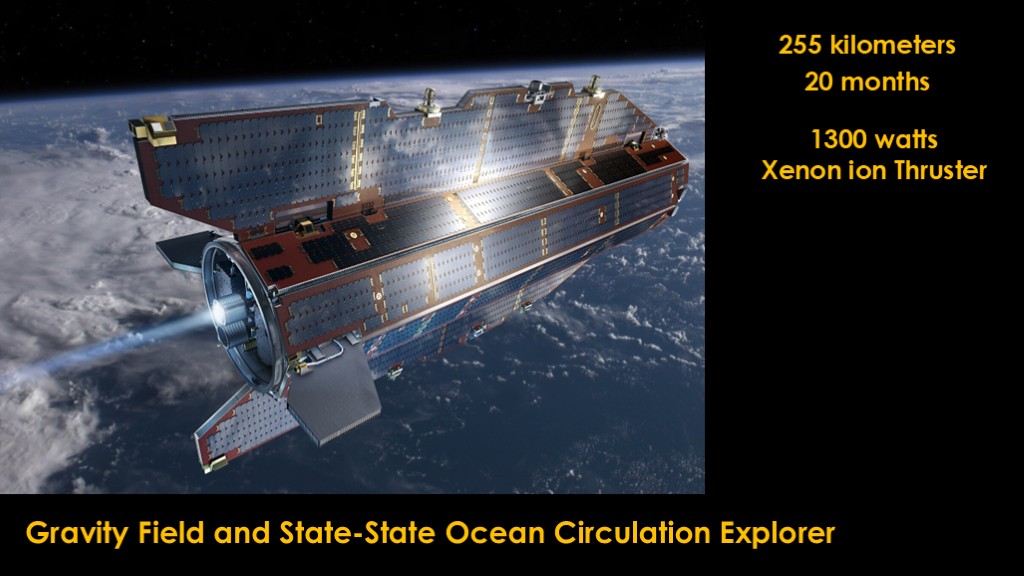
I'd like to introduce you to a satellite known as the gravity field and solid state ocean circulation explorer, or GOCE (go-see).
To do its job, it needs to hang out in a low orbit of 255 kilometers for 20 months. To keep from reentering, it has an ion thruster using xenon, powered by 1300 watts of solar panels.
It flew in march of 2009. It stayed on orbit for 55 months.
A simple, straightforward design using existing technology lasted for nearly 5 years.
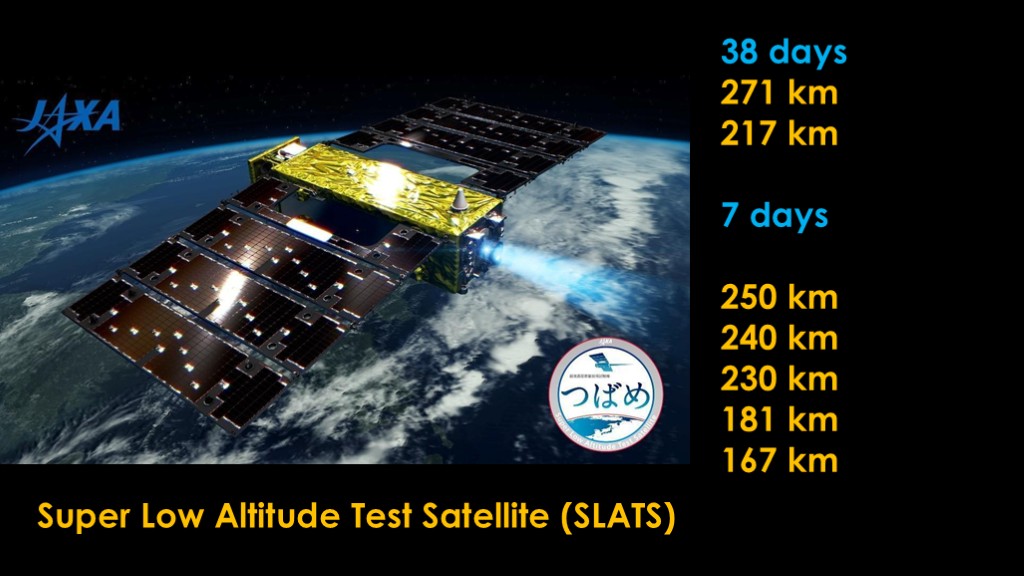
The Japanese Aerospace Exploration agency flew a satellite named SLATS in 2017. It had a goal of testing how well a satellite could do in very low earth orbits. Like GOCE, it had an ion thruster using xenon as the propellant.
It operated at 271 kilometers for 38 days, 217 kilometers for 38 days, then at 250, 240, 230, 181, and 167 kilometers for 7 days each, though at 167 days the ion thrusters were not sufficient to keep it in orbit without the help of the reaction control thrusters.
What GOCE and SLATs show is that it is perfectly reasonable to operate a very low earth orbit satellite with conventional ion thrusters.
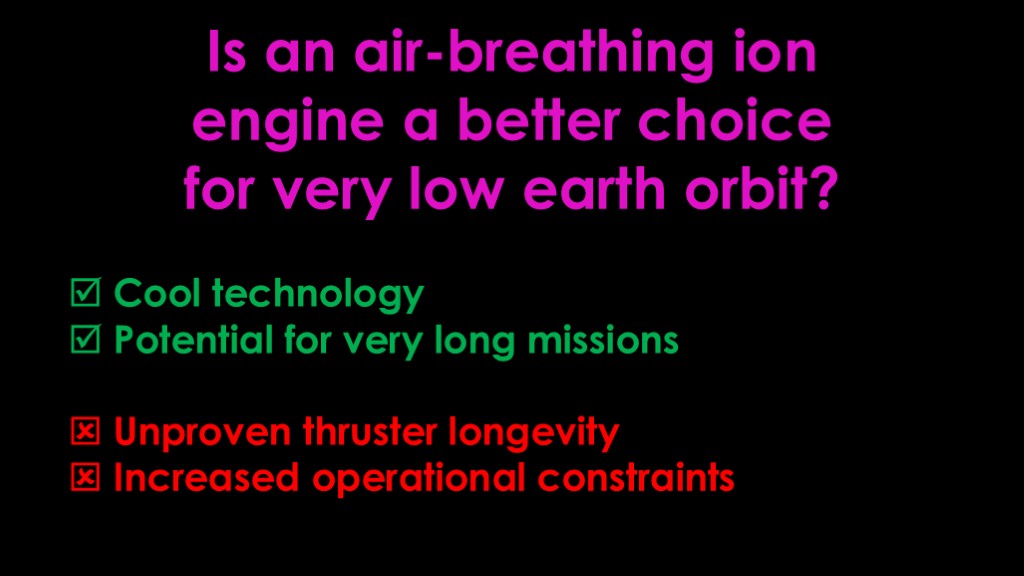
A better question to ask is whether an air breathing ion engine is a better choice for very low earth orbit, or would it make more sense to just use a traditional ion engine?
It's cool technology and it has the potential to enable very long missions, but it's not clear that thrusters - or other systems - will survive the atomic oxygen monster for very long missions, and it has more operational constraints than a conventionally-fueled very low earth orbit satellites.

Will it be successful?
The magic 8 ball says "ask again later", and I think it's right. We'll need to see how the thrusters develop and see some development missions.
Maybe there's something there, maybe there isn't.
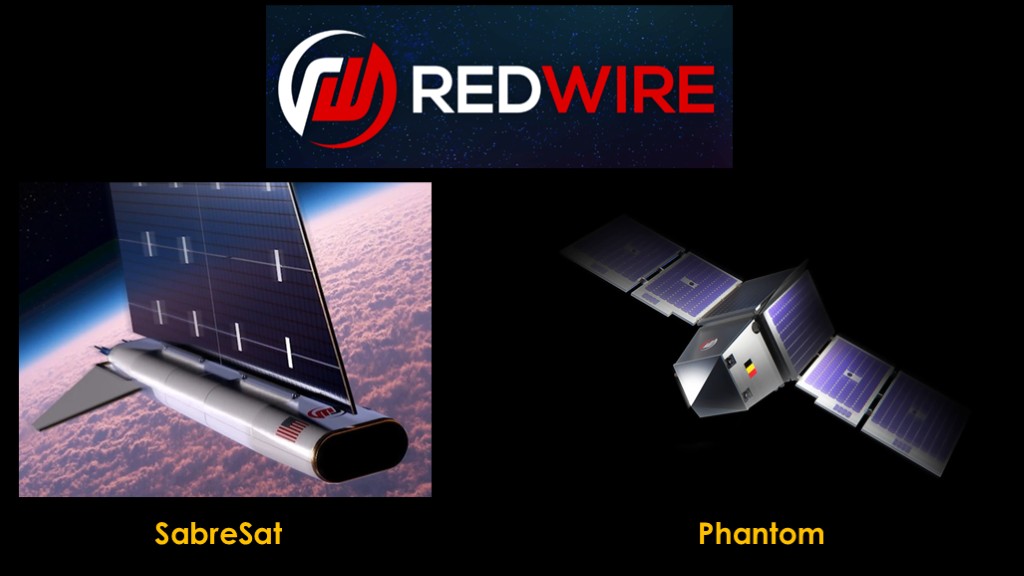
Redwire - an integrated aerospace and defense company focused on advanced technologies - is working on two different very low earth orbit platforms.
The small one is named Phantom, and it hosts a 50 kilogram payload on a 300 kilogram satellite. It uses standard electric (ie ion thruster) propulsion.
The larger one is SaberSat, with a 200 kilogram payload and a 400 kilogram satellite. The long tubular design is low drag and the renders show a large air intake at the front, but they are starting with electric propulsion with an option for air-breathing at some later date.
Redwire has made the same choice as the magic 8 ball - they are going to build very low earth orbit satellites that they know will work and then explore air-breathing propulsion later.
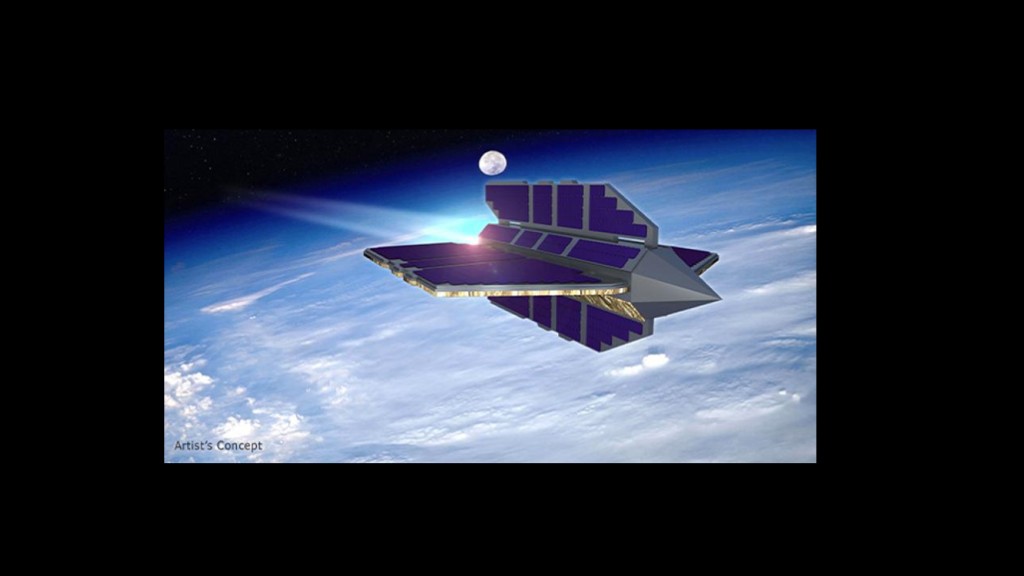
And that's the story around very low earth orbit satellites, both conventional and air-breathing varieties.
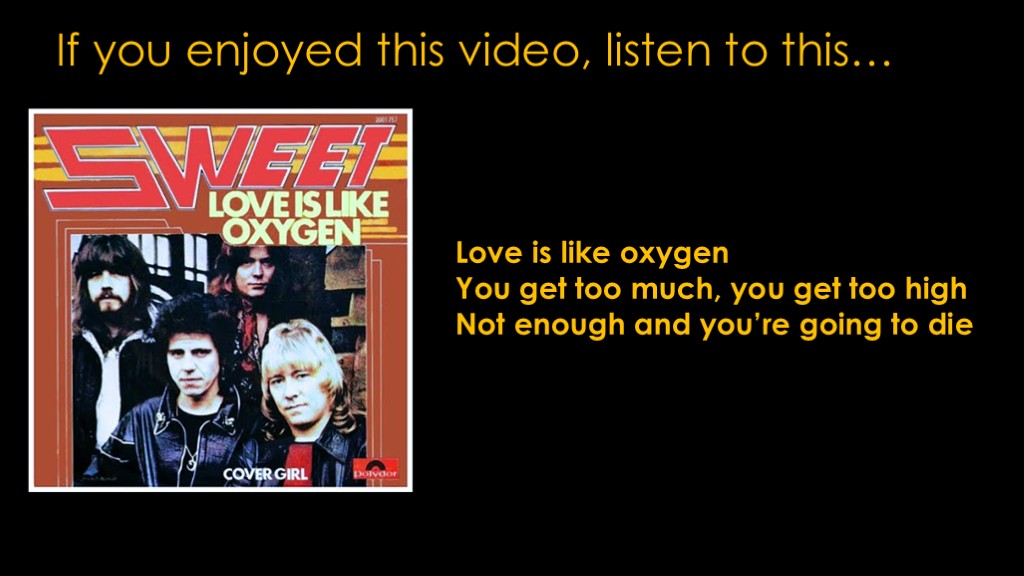
If you enjoyed this video, the song of the day is Sweet's 1978 hit, Love is Like Oxygen.